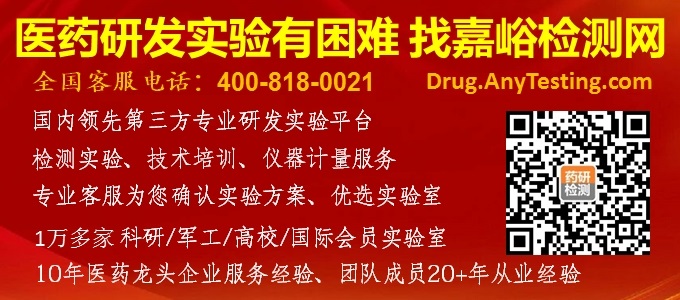您当前的位置:检测资讯 > 法规标准
嘉峪检测网 2025-07-14 14:38
近日,USP发布在1231制药用水的修订草案,其中对源水、制水工艺中添加物质的风险评估、取样、在线TOC、在线电导率、离线电导率检测等章节进行了修订,并新增 亚硝胺 章节:
在USP 1231 第 2 节(源水的考虑)中,更正了对第 3.3(饮用水)的交叉引用。在第 3 节(用于制药和检测目的的水)中阐明了在使用制药用水之前,必须将用于消毒的臭氧降低到低于检测限的水平。臭氧去除不充分会对水和/或水系统的材质产生负面影响。这里臭氧的限度未指定。
第 5.1.3 节(添加剂)补充说明,需要进行基于风险的评估来评估添加物质(如絮凝剂、酸、碱等)的使用、减少和检测。
根据第 6 节(取样),根据<643> 进行在线TOC检测和根据<645> 进行在线电导率检测比离线测试更具优势,因此明确推荐使用。如果不使用在线测量,则应确保水样代表实际使用的水。
|
BothTotal Organic Carbon 〈643〉 and 〈645〉 specifically state that these tests can be performed off-line or on-line. There are benefits and challenges for each approach (see 6.1 Purposes and Procedures and 7.1 Chemical Tests for Bulk Waters). In general, on-line testing avoids the risk of contamination of off-line samples by humans, containers, or the environment, and it provides immediate analysis and direct opportunities for real-time control, decision and intervention. For example, with on-line testing you can continuously test and accept the water as passing (for these chemical attributes). With this real-time analysis, you can prevent the utilization of the water in the event of a failed test result. Whether using on-line testing or laboratory analyses of grab samples, the tested water must be representative of the water used in production.▲(USP 1-Oct-2026) TOC 〈643〉 和 〈645〉 都明确指出这些测试可以离线或在线进行。每种方法都有优点和挑战(参见 6.1 目的和程序和7.1 散装水的化学测试)。一般来说,在线检测避免了离线样品被人员、容器或环境污染的风险,并为实时控制、决策和干预提供了即时分析和直接机会。例如,通过在线测试,可以(对这些化学属性)进行持续测试并放行水质。通过这种实时分析,可以在测试结果失败的情况下防止水的使用。无论是使用在线检测还是对取样进行实验室分析,检测水必须代表生产中使用的水。▲ (USP 2026 年 10 月 1 日) |
6.1.1工艺控制取样 章节中对微生物检测目的的取样前阀门和管道冲洗流速进行了规范,即冲洗流速≥2.43 m/s至少30 秒以提供足够的剪切力来充分去除阀门和出水管道内的任何脆弱的生物膜结构。
|
If microbial testing is needed for PC purposes, the sampling valve should have a properly installed, sanitary design that uses vigorous presampling flushing. This flushing shears off fragile biofilm structures growing on surfaces within the valve and water path before the sample is collected. This avoids biasing the microbial count of perhaps pristine water in the system behind that valve. A fully open valve flush [at greater than▲2.43 m/s▲(USP 1-Oct-2026)(8 ft/s)] velocity within the valve and connector for at least 30 s typically provides sufficient shear forces to adequately remove any fragile biofilm structures. Additional control measures for preventing sample contamination could also include stringent pre- and post-sampling outlet sanitation, the use of sterile hoses and gaskets or other connectors to direct the water flow, and other measures. 如果工艺控制需要进行微生物检测,则取样阀应采用正确安装的卫生设计,并使用强力的取样前冲洗。在取样之前,这种冲洗会剪掉生长在阀门和出水管道内表面的脆弱生物膜结构。这避免了该阀门后面系统中可能原始水的微生物计数出现偏差。阀门和连接器内完全打开的阀门冲洗流速[大于 ▲2.43 m/s▲ (USP 1-Oct-2026)(8 ft/s)]至少 30 秒,通常提供足够的剪切力来充分去除任何脆弱的生物膜结构。防止样品污染的其他控制措施还可能包括严格的采样前和采样后出口清洁、使用无菌软管和垫圈或其他连接器来引导水流以及其他措施。 |
第 7.1 节(散装水的化学测试)阐明了电导率测试可以从步骤2 直接开始进行离线分析 - 在这种情况下可以省略步骤1- 简化了日常实验室工作。此外,还解释了常用的“目标限值响应”与 TOC 的实际限值之间的差异,以及使用官方 USP 标准品的必要性。
|
▲If off-line measurement of conductivity is performed, there is no need to perform Stage 1 and Stage 2 in order. One can go directly to Stage 2 if off-line testing is preferred without first failing Stage 1.▲(USP 1-Oct-2026) 如进行电导率的离线测量,则无需按顺序进行步骤 1 和步骤 2。如果首选离线测试,可以直接进入步骤2,而不需要等步骤一失败。▲(USP 1-Oct-2026) |
第 7.2.1 节(无菌水的电导率)包含对第 7.2.2 节(无菌水的TOC)的交叉引用,以解释术语“标称容器体积”。在第 7.2.2 节中,该术语被定义为容器根据标准应容纳的体积,与实际灌装量无关。还提到了包装材料中挥发性有机成分的问题,这会增加 TOC 值。在这方面列出了 USP 661、USP 1663 和 USP 1664。
新增7.5(亚硝胺)章节,以解决亚硝胺污染的风险。需要强调的是,合适的水处理工艺可以去除亚硝胺及其可能的前体。然而,根据 USP,应定义适当的控制策略,并在适当时进行基于风险的评估。
|
7.5 Nitrosamines 亚硝胺
The presence of nitrosamines or their precursors in Purified Water and Water for Injection is directly related to their concentration in the starting water and the effectiveness of the water purification processes. A well-designed water purification system—utilizing softener, reverse osmosis, UV lamps, ion-exchange, distillation, etc.—will generally remove nitrosamine and contributing precursor impurities (e.g., ammonium, amines, nitrates, nitrites). Although no water system can guarantee the complete removal of nitrosamines and their precursors, a well-designed system should significantly reduce the risk of their presence or formation. Users can employ a control strategy by applying a risk-based approach to assess the potential presence of nitrosamine impurities in drinking water and the system's ability to remove them. 纯化水和注射用水中亚硝胺或其前体的存在与它们在起始水中的浓度和水净化工艺的有效性直接相关。设计良好的净水系统——利用软化器、反渗透、紫外线灯、离子交换、蒸馏等——通常会去除亚硝胺和产生前体的杂质(例如铵、胺、硝酸盐、亚硝酸盐)。虽然没有水系统可以保证完全去除亚硝胺及其前体,但设计良好的系统应可以明显降低它们存在或形成的风险。用户可以通过应用基于风险的方法来采用控制策略来评估饮用水中可能存在的亚硝胺杂质以及系统去除这些杂质的能力。 |

来源:GMP办公室


